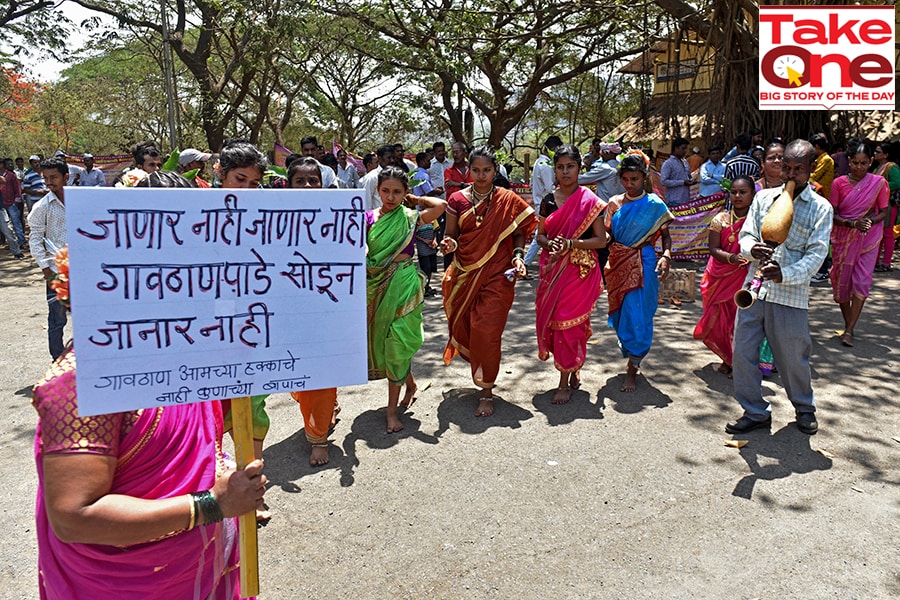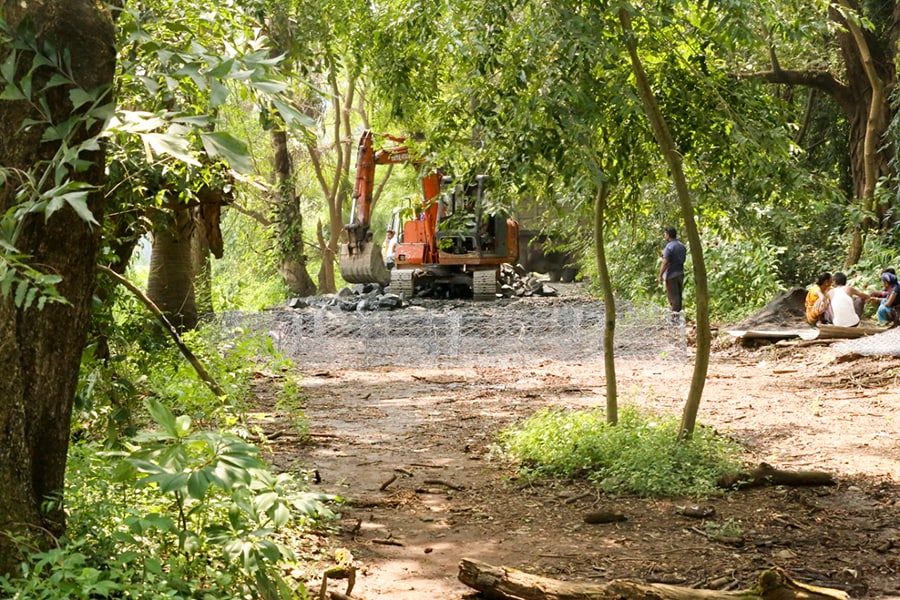
Gender and climate change: Meet the women of Sanjay Gandhi National Park, Aarey, and beyond
An important goal of the UN climate summit in Glasgow that starts on October 31 is to curtail deforestation. In India, including at the 'Save Aarey' movement in Mumbai, women have been at the forefront of resisting threats to biodiversity in the name of public transport and other infrastructure projects
 As part of the Save Aarey protests, Warli adivasis from 27 hamlets in Aarey Milk Colony protested outside the Aarey Dairy office on May 28 2019 against plans to resettle them in rehabilitation buildings to make way for various development projects; Image: Satyabrata Tripathy/Hindustan Times via Getty Image
As part of the Save Aarey protests, Warli adivasis from 27 hamlets in Aarey Milk Colony protested outside the Aarey Dairy office on May 28 2019 against plans to resettle them in rehabilitation buildings to make way for various development projects; Image: Satyabrata Tripathy/Hindustan Times via Getty Image
Rafia Abdulali’s support of her husband Humayun Abdulali, my father-in-law, was crucial to his being “singlehandedly responsible for crafting one of the most unique protected areas in the world,” the 104-square kilometre Sanjay Gandhi National Park (SGNP) locatated in the heart of Mumbai. His sustained interest over many decades since the 1960s to craft SGNP, to document its birds and to ensure its long-term protection from a highway in 1975 would have been impossible without her: Rafia always accompanied him on his Sunday birdwatching jaunts. She was in charge of the tea. As an honorary wildlife warden tasked with bringing wildlife poachers to justice, frequent visits to the police station and magistrates’ courts were part of their regular beat.
Today, the role of women defenders of the environment is recognised as vital and goes far beyond serving tea or providing support to men. Phumzile Mlambo-Ngcuka, under-secretary general of the United Nations (UN) and executive director of UN Women, said on World Environment Day [June 5], “Women and girls must be at the heart of the fight for climate justice.”
SGNP, the most visited national park in the world, is home to two lakes, Tansa and Vihar, which supply drinking water to Mumbai, and the 2,400-year-old Kanheri caves. Indigenous wildlife, including 254 species of birds, 40 species of mammals, 78 species of reptiles and amphibians, 150 species of butterflies and over a staggering 1,300 species of plants, thrive within it.
In recent years, as threats to SGNP’s buffer area—the 12 square-kilometre Aarey Milk Colony and the Powai lake beyond Aarey—have intensified, numerous women have engaged with a multi-faceted and prolonged struggle, becoming a force to reckon with in the ‘Save Aarey’ movement.
In 2014, to ease congestion in overcrowded suburban railways, Mahrashtra state government, with funding from the Japan International Cooperation Agency (JICA), began construction of multiple metro-rail links between parts of Mumbai that lack rail connectivity. Along metro rail routes, potted palms and the message, “Mumbai is upgrading”, were displayed.




 Pramila and Chaitali Bhoir sit outside their home, a brown mud hut decorated with Warli paintings. On every painting, love for their home and their fear of its loss was evident
Pramila and Chaitali Bhoir sit outside their home, a brown mud hut decorated with Warli paintings. On every painting, love for their home and their fear of its loss was evident A new bicycle track being laid across a narrow dirt trail in dense undergrowth bordering the lake, with a width of 6-8 meters, is wide enough to be motorable
A new bicycle track being laid across a narrow dirt trail in dense undergrowth bordering the lake, with a width of 6-8 meters, is wide enough to be motorable



